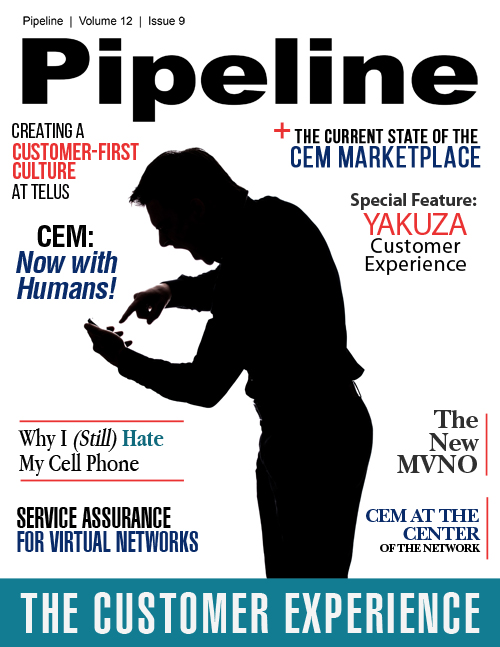CEM - Now with Humans!
When everything is going well, CRM systems like those used by Barnes & Noble, eBay, UPS, Lyft, et al., are just great. Send email or SMS. Provide an excellent customer service portal. Keep me in the loop. Ain’t automation great?
Yes, of course, until something goes wrong.
Processing Exceptions
Companies sometimes know when a customer transaction goes awry.
Sometimes automated systems detects problems before the customer finds out. That could have happened at the frame store. Whether the problem was indeed a problem with a defective component (the mis-cut matte) or was triggered by labor issues (perhaps an employee was sick), something somewhere could have triggered an action. Algorithms could be used to trigger the correct response. If it’s a custom order that will miss a completion deadline, the CRM system could suggest an apologetic phone call. In other cases, an email might be sufficient – think about how airlines generally do a good job notifying about flight delays, for example.
Sometimes the problems are detected first by a customer, such as a fragile item that arrives broken. That’s where the web portal or AVR phone system might suffice for most problem resolution, such as requesting a refund or an RMA. Several times, before the advent of streaming, Netflix DVDs arrived cracked and unplayable. The company’s web-based portal made it easy to report the broken disc and request a replacement. Of course, customers find problems all the time: Returning a garment to a store, telling the waiter that the French fries are cold, telling the airline that the luggage didn’t arrive with the flight. Most of the time, the customer knows about the problem before the vendor; the vendor’s job is to make it easy and painless to report the problem and attempt to resolve it quickly, before minor annoyance turns into anger.
One of the best ways to make a customer happy is to empower a human – such as a store manager – to do whatever it takes to get things right. You can tell the stores where the sales and support staff have latitude… because those are the stores that you stay loyal to, even when something goes wrong. The converse, an inflexible hierarchical system that requires forms, appealing to store managers, regional managers and corporate executives, leave everyone with a bad taste. The customer won’t come back, and the store not only lost future business, but also lost the opportunity to delight the customer, who might become a loyal evangelist for the brand.
The retailer L.L. Bean is famous for letting customers return anything, anytime: “Our guarantee is based on something as simple as a handshake – the deal that you'll be satisfied with your purchase, and if you are not, we'll make it right. We guarantee that we'll hold up our end of the bargain. It's just how we do business. If your purchase isn't completely satisfactory, we're happy to accept your exchange or return at any time for items purchased directly from us.” It may be apocryphal, but when I was a kid, I heard that L.L. Bean accepted the return of a set of snow tires that a customer was dissatisfied with, even though L.L. Bean didn’t sell tires, and never did. If the story is true, the small cash outlay was worth it to keep the customer satisfied, and to maintain a reputation as a company that stands behinds its products.
Empowering employees to do whatever it takes to make customers happy sounds expensive. That’s because it is expensive. If you are offering a premium product, you can bake those costs into your pricing structure. If you are discounter offering a commodity product or service at rock-bottom prices, you don’t have the margin to offer excellent customer services. That’s one reason why CRMs are so popular, because in nearly all cases, they can offer satisfactory service less expensively than human call centers. At least, when the call goes well. When that happens, you need humans in the loop.
Processing Angry Exceptions
CRM systems will not make an unhappy customer happy. They certainly will not make an angry customer less angry. Of course, even human store managers can mess up, leading to a really annoyed customer.
My framing story had a pretty happy ending, thanks to both CRM and to social media. Not getting satisfaction from the store, and being frustrated with the changing story, I took to Twitter, tweeting out the situation loudly, tagging the company and using the hashtag #fail. This was on a Sunday morning. Within two hours, my phone rang – it was a corporate executive at the out-of-state headquarters. He had been alerted to my tweet by the company’s social media team’s software, which was savvy enough to alert a human, who was empowered to alert the exec, who had access to the sales database from home and was able to find my phone number on Sunday.



















